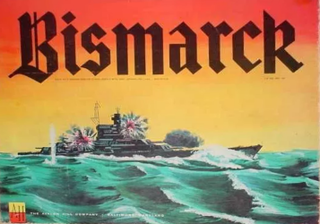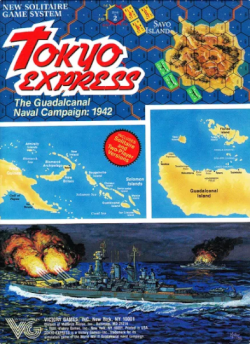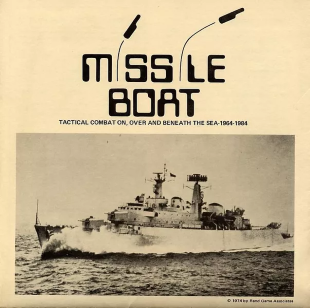This article needs additional citations for verification .(March 2009) |

Cry Havoc is a board wargame published by Standard Games and Publications in 1981 that uses a complex set of rules to simulate medieval one-on-one combat.
This article needs additional citations for verification .(March 2009) |

Cry Havoc is a board wargame published by Standard Games and Publications in 1981 that uses a complex set of rules to simulate medieval one-on-one combat.
Cry Havoc is a two-player wargame with a medieval setting. Several scenarios are included in the game that set up a variety of combatants on each side, including peasants, sergeants, billmen, men-at-arms, knights and various other "character" classes. For example, in the scenario called "Peasant Revolt", 11 peasants, 19 yeoman and six pack mules are arrayed against 13 mounted and heavily armoured knights. [1]
The game comes with two colour maps, three rulebooks, and 228 counters printed on thin cardstock. [1]
The Cry Havoc system was designed by Gary Chalk and published by the British game company Standard Games in 1981. [2] Standard used the same combat system in several game expansions: [3]
Standard also published two scenario books for Cry Havoc, with Book 1 published in 1984 and Book 2' in 1986, and maps for medieval towns and castles. The same combat rules system was used in a fantasy setting titled Dark Blades .
Jeux Rexton and then Eurogames published French-language editions of Cry Havoc as well as some of the expansions.
In the May 1984 edition of Dragon (Issue 85), Ken Rolston was impressed with the quality of the maps, with the concise and well-written rulebooks, and the simplicity of the combat system. His only minor caveat was that the counters were too thin to be easily picked up. Rolston highly recommended it, saying, "Cry Havoc is easy to learn and simple to play... The rules are clear and unambiguous, and the scenarios are varied and dramatic... The value of Cry Havoc is in the beauty of its presentation, the charm of its medieval atmosphere, and the appeal of its simple mass combat systems. [1]
In the November-December 1984 edition of Space Gamer (Issue No. 71), Craig Sheeley also gave a thumbs up, saying, "Cry Havoc is superb, a wonderful thumbnail sketch of medieval combat. Gamers interested in FRPGs will find it a useful aid, especially the maps." [4]
In the December 1984 issue of Casus Belli (Issue #23), Patrick Giacomini reviewed the Siege expansion, which he said had a far superior set of rules that were "consistent and (relatively) precise" compared to the original Cry Havoc! game. Although he admired the cover artwork, he criticized the box design, calling it too thin and too large, saying, "They often arrived slightly crushed, fortunately without damage to the components inside." He also pointed out that the two small plastic ziplocks included for storage were far too small for the 200 counters in the game. Overall, Giacomini thought the game covered a grey area between wargames and role-playing games, pointing out that in addition to being a "pleasant wargame", this game provided opportunities for "Personalization of leaders, diplomatic evolution [and] introduction of adventurers into medieval conflicts." [5]
In a retrospective review in Issue 6 of Simulacrum, Joe Scoleri noted that "Despite what it says on the box, Cry Havoc is anything but a 'simulation' of medieval combat. The game compares to medieval combat in the same way Victory Games' Ambush compares to WWII — large doses of Hollywood and heroism are emphasized over history." However, Scoleri felt that the game's sense of style compensated for this, and concluded, "After you've had a taste of the components, game play and scenarios, chances are you'll be having too much fun to be bothered by realism issues." [2]

Chill is an investigative and modern horror role-playing game originally published by Pacesetter Ltd in 1984 that captures the feel of 20th-century horror films.

Warhammer is a tabletop miniature wargame with a medieval fantasy theme. The game was created by Bryan Ansell, Richard Halliwell, and Rick Priestley, and first published by the Games Workshop company in 1983.

Hitler's War is a strategic level World War II board wargame first published by Metagaming Concepts in 1981, and then by Avalon Hill in 1984 that simulates the war from Operation Barbarossa to the Fall of Berlin. Critical reception was general favorable, using phrases like "very good", "An incredible bang for the buck", "single most satisfying game of its type" and "well thought out."

Bismarck is a board wargame published by Avalon Hill in 1962 that simulates the hunt for the Bismarck.

Napoleon's Last Battles is a board wargame published by Simulations Publications in 1976 that simulates the last four battles fought by Napoleon. It was one of SPI's most popular games, and also received many positive reviews.

Chronicles of Osgorth: The Shattered Alliance is a 1981 computer wargame published by Strategic Simulations in January 1982 for the Apple II and Atari 8-bit computers. Programmed by John Lyon, it relies on a new game engine, called RapidFire, intended to make faster and easier access to wargames published by the studio. During a turn, the program selects the units each in turn and the player only has to order them to move, attack or cast a spell. The order is then executed immediately before the program selects another unit. The game offers two categories of scenarios. The first is composed of medieval-fantasy confrontation, including a free adaptation of the Battle of Gondor against the Mordor forces in the Lord of the Rings. The second is composed of historical battles of antiquity.

Bounty Hunter: Shootout at the Saloon is a combat picture book game published by Nova Game Designs in 1982 that simulates an Old West shootout between a lawman and an outlaw. The game uses two picture books to delineate combat, similar to the air combat game Ace of Aces. Shootout at the Saloon was supposed to be the first in a series of Bounty Hunter games that would encompass an entire town, but critical reception and sales were tepid, and no further games in the line were published.
Siege is a 1984 board game published by Standard Games and Publications.

Dark Blades is a medieval fantasy wargame published in 1986 by Standard Games and Publications that is based on the Cry Havoc rules system.

Additional Scenarios for the Game: Cry Havoc - Book 1 is an expansion published by Standard Games and Publications in 1984 for the medieval board wargame Cry Havoc.

Tokyo Express: The Guadalcanal Naval Campaign – 1942 is a solitaire board wargame published Victory Games in 1988.

MBT is a board wargame published by Avalon Hill in 1989 that simulates hypothetical World War Three tank combat between NATO and Warsaw Pact forces in Western Europe. A second edition was published by GMT Games in 2016.

Europe Aflame is a board wargame published by TSR in 1989 that simulates the European and Middle East theatres of World War II.

The Game of France, 1940: German Blitzkrieg in the West, originally titled "The Battle for France, 1940", is a board wargame originally published by Simulations Publications Inc. (SPI) in 1971 that was subsequently re-issued by Avalon Hill in 1972. Both editions simulate the World War II Battle of France in 1940, when the German blitzkrieg offensive overwhelmed French and British defenses in northern France.

Frederick the Great, subtitled "The Campaigns of The Soldier King 1756–1759", is a board wargame published by Simulations Publications Inc. (SPI) in 1975 that simulates several of the campaigns of Frederick the Great in Central Europe during the Seven Years' War. When SPI ran into financial difficulties, they sold the rights to the game to Avalon Hill, who produced a second edition in 1982.

Eagle Day: The Battle of Britain is a board wargame published by Histo Games in 1973 that simulates the Battle of Britain. Reviewers noted its marked similarity to previously published wargames The Battle of Britain, and Luftwaffe, but found Eagle Day to be inferior to both.

Missile Boat, subtitled "Tactical Combat On, Over and Beneath the Sea 1964-1984", is a board game published by Rand Game Associates (RGA) in 1974 that simulates naval combat using ships and weaponry from the mid-1960s to the mid-1980s.

Close Assault: A Man-to-Man Game of Squad Tactics and Command - Europe 1939–1945 is a board wargame published by Yaquinto Publications in 1983 that simulates squad-level combat during World War II.

Iliad: The Most Renowned War Legend is a board wargame published by the Italian game publisher International Team (IT) in 1979 that simulates the siege of Troy as described in Homer's Iliad.

Outremer is a board wargame published by Standard Games in 1987 that simulates personal combat during the medieval Crusades, using a system of rules developed for a previous game, Cry Havoc.